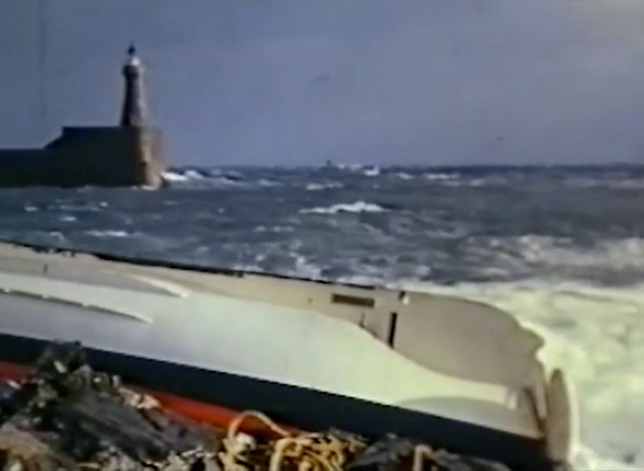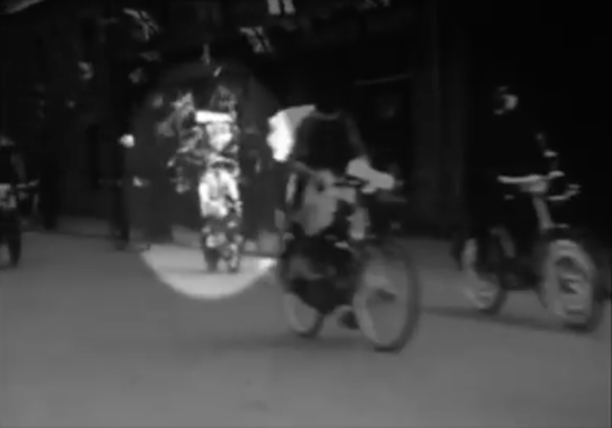Andrew Davidson is a student at Robert Gordon University in Aberdeen.
Fraserburgh is a small coastal town that sits on the North East corner of Scotland. It was the birthplace of abolitionist James Ramsay in 1733; one of the founding fathers of modern Japan, Thomas Blake Glover in 1838; world renowned fashion designer, Bill Gibb in 1943; and me, in 1985.
I am in no way suggesting that my name be added alongside theirs in the annals of the town’s history, the only thing we hold in common is that we all at one point in time lived in the same place. However, to convolute this idea and confuse our commonality further, it might be more appropriate to say we all lived in the same geographical region but arguably all lived in different places.
Growing up in the 1980s and 90s, Fraserburgh was still very much a summer holiday destination with two caravan parks that ran alongside what was once the railway line, full of families who came for the beach and, believe it or not, the mild summer weather. The harbour full of boats landing fish from the North Sea and the town centre, a thriving hub of small local businesses.
I have always been fascinated by the incremental changes that occur in the urban landscape, those that happen often so gradually that the memory of what lay before is difficult to recall. The look and feel of Fraserburgh has changed in the 30 years since my early youth. It is currently undergoing a well needed, and deserved, process of regeneration with government funding secured to restore its architecture and to preserve its culture, history and traditions.
I feel it’s impossible to pinpoint the moment the town started to change. There were certainly a number of external factors that contributed, many of which have affected other coastal towns in similar ways, and it would be wrong to compare my childhood Fraserburgh to the Fraserburgh of today under the stark contrast of then and now. As with those before me, I lived through a continual process of change, and like many, hold a nostalgia for something seemingly lost.
The idea of nostalgia evoking strong emotions and reconnecting people to a place and to their shared histories was one of the driving forces behind collating films shot by residents of Fraserburgh throughout the 20th century for Fraserburgh on Film. It was my dissertation project at Robert Gordon University and while looking into the theory that would underpin the project, a quote taken from the research paper, Recalling community: Using material culture and digital archives in Salford, written by Lawrence Cassidy, stuck with me. It was suggested that digital artefacts when used in conjunction with processes of digital storytelling can “rejuvenate a sense of place, despite the eradication of the built and social environment”. The parallels between Fraserburgh and Salford that could be drawn in this respect influenced the aims, themes and character of the project
Although motivated by digital preservation, I also wanted to look at the ways in which digital moving image could reconnect people with a place and be used as a tool for participatory community heritage. Through the medium of moving image, these glimpses in to the past capture the essence of the town as it was and events that shaped its social history. Moments in time once locked in personal collections brought to the fore.
The clips can be seen as short vignettes that when combined tell stories from a shared past. The town centre as it was filmed on an average day in the 1960s; a train pulling in to a long since demolished Fraserburgh station; Santa Clause arriving at Benzie and Miller department store in the late 1930s, the site of which a carpark can now be found; the John and Charles Kennedy lifeboat washed upon the shore following the disaster that claimed the lives of six crewmembers.


Fraserburgh town centre 1960s Inside Fraserburgh train station


Santa arrives at Benzie and Miller late 1930s The John and Charles Kennedy washed ashore near Fraserburgh Harbour
As well as these wider shared connections, many of the films have personal association for people living in the community today. On October 6th 1956 Captain Alexander Ramsay wed the Hon. Flora Fraser at a ceremony attended by the Queen Mother and Queen Ingrid of Denmark, conducted by my grandfather, Rev. J. Wilson. Towards the end of the clip, a brief shot can be seen that shows my grandfather and grandmother as well as my mother and aunt as children. In seeing this clip, I experienced first hand the ability of digital artefacts to connect on a very personal level. Subsequent similar experiences have emerged from members of the online community which have further expanded narratives; personal connections and reflections which foster a sense of ownership over a shared heritage.

My grandfather and grandmother, Jack and Nora with my mother and aunt, Lorna and Muriel


Andrew Noble, seen in a clip of a bike parade held for the 1937 coronation, picture submitted by his relative
Strangely, I have always felt my nostalgic connection with Fraserburgh goes beyond my experience as a child of the 1980s. Through hearing my father’s stories of the town as he experienced it as a child of the 1950s, I have grown up aware of how the town was and the changes that have occurred. Seeing moving image captured over the years has helped me to reinvigorate a sense of place and a greater understanding of my hometown and I hope others have found a similar connection. The digital moving image featured in the project have been realised as valuable artefacts of social history that hold the ability to reinvigorate a sense of connection, place and civic pride for our corner of the North East of Scotland.
Incremental changes may make it easy to forget what came before and personal experiences influence memory and recall. However, in preserving snippets of life in Fraserburgh as it once was it is hoped that a sense of shared belonging can be instilled, bringing the community that live in the town today closer to those who lived there in the past. A view from our place in to theirs.

Read more...